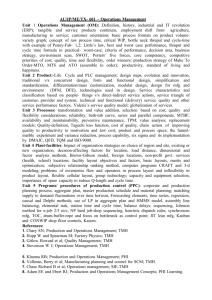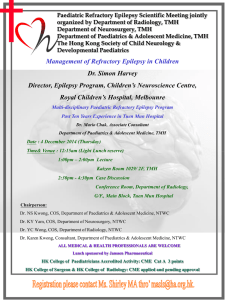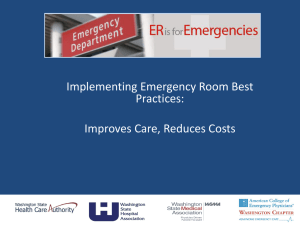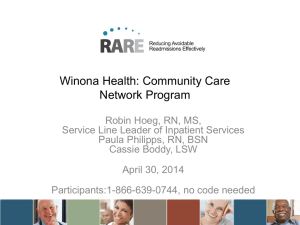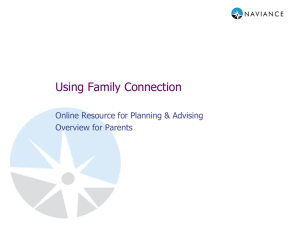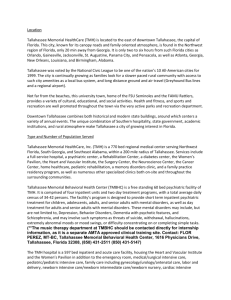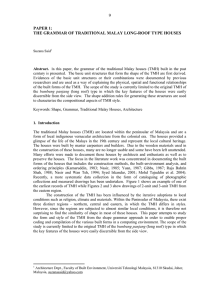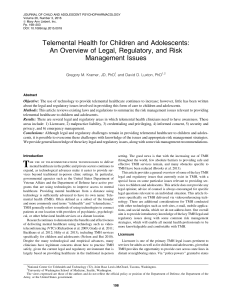Comprehensive Transitional Medical Home for
advertisement
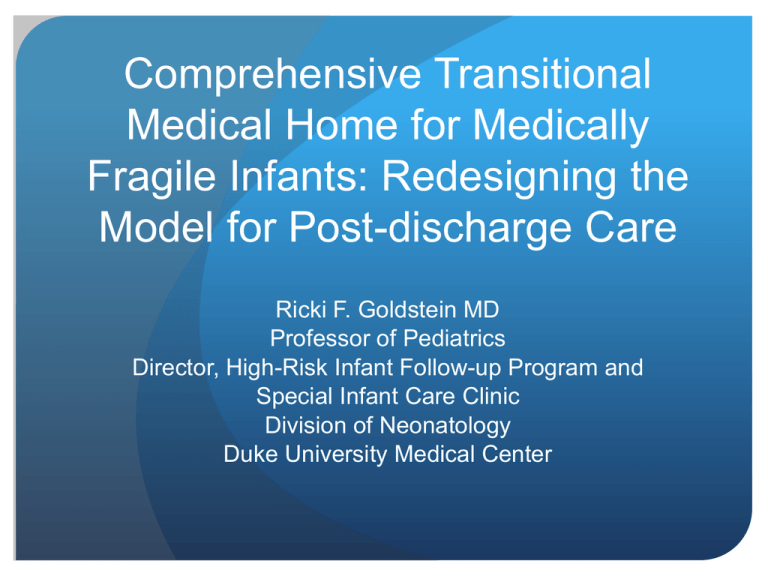
Comprehensive Transitional Medical Home for Medically Fragile Infants: Redesigning the Model for Post-discharge Care Ricki F. Goldstein MD Professor of Pediatrics Director, High-Risk Infant Follow-up Program and Special Infant Care Clinic Division of Neonatology Duke University Medical Center The Problem Extremely premature and critically ill term infants discharged home with a complex mix of pulmonary, cardiac, gastrointestinal, endocrine and neurologic problems Multiple medications Complicated feeding regimens Special equipment Limited insurance coverage for nursing care Few pediatricians and family medicine physicians have the training, experience, and availability to optimally care for these fragile infants during their most vulnerable first year of life. Present system of care Frequent lack of continuity of primary care house-staff clinics large pediatric and family medicine practices health departments Multiple subspecialty clinic appointments scheduled soon after discharge Frequent visits to the emergency room for acute problems (triaged at night) Inconsistent quality of community case management Poor communication, fragmentation and/or duplication of care Consequences Delayed or ineffective care acute illnesses or complications develop into severe, even life-threatening problems feeding and nutritional difficulties lead to failure to thrive Frequent use of emergency room Evaluated by physicians unfamiliar with neonatal problems Multiple visits with eventual admission Rehospitalization Often straight to PICU Solution Comprehensive Transitional Medical Home (TMH)- funded by The Duke Endowment Tertiary care medical center team Health care providers with special training, experience, availability and commitment Medical follow-up during “transitional” period between neonatal hospitalization and care by general pediatric medical home Chronic medical problems more stable Growth and nutrition established Parents more comfortable and confident Goals of TMH Home Program Maximize long-term medical and developmental outcomes Comprehensive medical care Improved community case management Decrease overall cost of post-discharge medical care Educate well-child care providers in the longterm care of infants with complex medical problems Research A large, single-center randomized trial of comprehensive care for preemies in Dallas Well-baby care Acute and chronic illnesses and complications Experienced physicians and nurse practitioners, Available 5 days/week in clinic and by pager 24/7 Results Substantially reduced life-threatening illnesses resulting in death or admission to a PICU Reduced cost of post-discharge care during the first year of life. Broyles et al JAMA 2000;284:2070-6. Research Children’s hospital-based multidisciplinary clinic in Kansas provides comprehensive and coordinated care for medically complex children ensures that each patient receives all necessary medical, nutritional, and developmental care Results Significant decrease in total Medicaid costs Casey PH et al. Arch Pediatr Adolesc Med. 2011;165(5):392-398. Proposed TMH model of care Immediate medical follow-up within 1-3 days after discharge. Co-management of acute illnesses related to neonatal problems (ability for next day visit) Surveillance and treatment of chronic medical problems with coordination of consulting subspecialist visits when needed. Ongoing feeding and motor evaluations and arrangement for intervention services Proposed TMH model of care 24/7 pager availability, by experienced physician or nurse practitioner familiar with the babies' medical problems Parents to call with questions and acute problems Primary care provider when seeing child ER physicians Admitting hospital Eligibility criteria Extreme prematurity: Less than or equal to 26 weeks gestation at birth Chronic medical problems in premature or term infants Chronic lung disease of infancy Feeding problems (e.g. G-tube, NG tube, severe gastroesophageal reflux, dysphagia) Surgical necrotizing enterocolitis, other short-gut syndrome Severe respiratory failure ECMO Congenital diaphragmatic hernia with PPHN Congenital heart disease requiring delayed or multi-staged correction (in future) Severe brain injury Hypoxic ischemic encephalopathy Severe intraventricular/intracranial hemorrhage Periventricular leukomalacia, neonatal stroke Evaluation of TMH Program Acute illnesses (type and how treated) Growth during first year Timeliness of immunization administration including Synergis and Flu shots Emergency room visits (reasons and outcome) Sub-specialty clinic visits (type and number) Rehospitalizations, including but not limited to PICU stays (reasons and length of stay) Early intervention services (type, when initiated) Evaluation of TMH Program Nature of phone calls received from parents and the outcome of advice given. Nature of phone calls received from WCC providers or outside ER’s and the outcome of advice given. Neurodevelopmental outcome at 9-12 months of age Cost of all medical care during the first year after discharge (including primary care and specialty visits, acute care, hospitalizations, ER visits, medications, etc) Measureable goals Improve continuity of care and decrease duplication of services compare number of different well-child care and subspecialty providers over first year Decrease emergency room visits Decrease number of and length of stay during rehospitalizations to Duke or other hospital Decrease PICU admissions and length of stay Measureable goals Improve medical and developmental outcomes of our most medically fragile NICU (and eventually PCICU) graduates. Decrease post-discharge cost to third party payers for NICU and PCICU graduates medically fragile infants during the first year of life. Present and future partners North Piedmont Community Care Network Local post-discharge visits and early coordination of care Initial communication with case managers in other counties North Carolina Children’s Accountable Care Collaborative Hospital based case manager to serve as liaison to all medical providers and community agencies Work closely with TMH program to improve outcomes and decrease cost of care for Medicaid patients.
